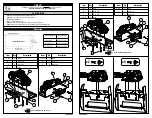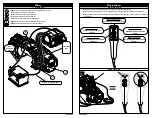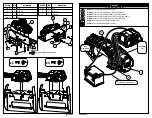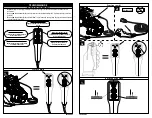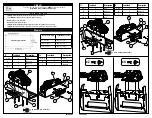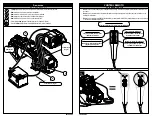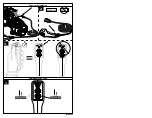
VR EVO INSTALL GUIDE
Disposal / Mise au rebut / Cómo desechar las baterías
Batteries should not be disposed of in general household waste. Observe the local waste disposal
regulations, details of which can be obtained from your local authority.
Il ne faut pas jeter les batteries avec les déchets ménagers. Respectez les lois en vigueur relatives à la mise au
rebut, dont vous pouvez obtenir des détails auprès de vos autorités locales.
Las baterías no se pueden desechar con la basura habitual. Consulte la normativa local de residuos,
información que podrá obtener de la autoridad local.
Li-ion
(Deutsch) Bitte besuchen www.warn.com für Installationsanleitung.
(Svenska) Besök www.warn.com för Installera instruktioner.
(Italiano) Visitare www.warn.com per installare istruzioni.
(Suomi) Vieraile www.warn.com asennusohje.
(Nederlands) Bezoek www.warn.com voor installatiehandleiding.
(Português) Visite www.warn.com para guia de instalação.
WARN INDUSTRIES, INC.
12900 S.E. Capps Road,
Clackamas, OR USA 97015-8903, 1-503-722-1200, FAX: 1-503-722-3000
Customer Service:
1-800-543-9276
Dealer Locator Service:
1-800-910-1122
International Fax:
1-503-722-3005
103484A3
FCC Regulation
This device complies with Part 15 of the FCC Rule. Operation is subject to the following two conditions: (1) this device
may not cause harmful interference, and (2) this device must accept any interference received, including interference
that may cause undesired operation.
This equipment has been tested and found to comply with the limits for a Class B digital device, pursuant to part 15 of
the FCC Rules. These limits are designed to provide reasonable protection against harmful interference in a residential
installation. This equipment generates, uses and can radiate radio frequency energy, and if not installed and used
in accordance with the instructions, may cause harmful interference to radio communications. However, there is no
guarantee that interference will not occur in a particular installation. If this equipment does cause harmful interference
to radio or television reception, which can be determined by turning the equipment off and on, the user is encouraged to
try to correct the interference by one or more of the following measures:
• Reorient or relocate the receiving antenna.
• Increase the separation between the equipment and receiver.
• Connect the equipment into an outlet on a circuit diff erent from that to which the receiver is connected.
• Consult the dealer or an experienced radio/TV technician for help.
Made in:
China
Contains FCC ID:
2ASYP-LDVR3
Industry Canada
This device complies with Industry Canada license-exempt RSS standard(s). Operation is subject to the following two
conditions: (1) this device may not cause interference, and (2) this device must accept any interference, including
interference that may cause undesired operation of the device.
Under Industry Canada regulations, this radio transmitter may only operate using an antenna of a type and maximum (or
lesser) gain approved for the transmitter by Industry Canada. To reduce potential radio interference to other users, the
antenna type and its gain should be so chosen that the equivalent isotropically radiated power (e.i.r.p.) is not more than that
necessary for successful communication.
This radio transmitter (
25030-LDVR3
) has been approved by Industry Canada to operate with the antenna types listed
below with the maximum permissible gain and required antenna impedance for each antenna type indicated. Antenna types
not included in this list, having a gain greater than the maximum gain indicated for that type, are strictly prohibited for use
with this device.
Le présent appareil est conforme aux CNR d’Industrie Canada applicables aux appareils radio exempts de licence.
L’exploitation est autorisée aux deux conditions suivantes: (1) l’appareil ne doit pas produire de brouillage, et (2) l’utilisateur
de l’appareil doit accepter tout brouillage radioélectrique subi, même si le brouillage est susceptible d’en compromettre le
fonctionnement.
Conformément à la réglementation d’Industrie Canada, le présent émetteur radio peut fonctionner avec une antenne d’un
type et d’un gain maximal (ou inférieur) approuvé pour l’émetteur (
25030-LDVR3
) par Industrie Canada. Dans le but de
réduire les risques de brouillage radioélectrique à l’intention des autres utilisateurs, il faut choisir le type d’antenne et son
gain de sorte que la puissance isotrope rayonnée équivalente (p.i.r.e.) ne dépasse pas l’intensité nécessaire à l’établissement
d’une communication satisfaisante.
L’émetteur radio (identifi er l’appareil par son numéro de certifi cation ou par son numéro de modèle si la catégorie est II) a été
approuvé par Industrie Canada pour fonctionner avec les types d’antennes fi gurant dans la liste ci-dessous et l’impédance
d’antenne maximum requise est indiquée pour chaque type d’antenne. Il est strictement défendu d’utiliser avec cet appareil
des types d’antennes qui ne sont pas incluses dans cette liste et qui ont un gain supérieur au gain maximum indiqué pour ce
type d’antenne.


